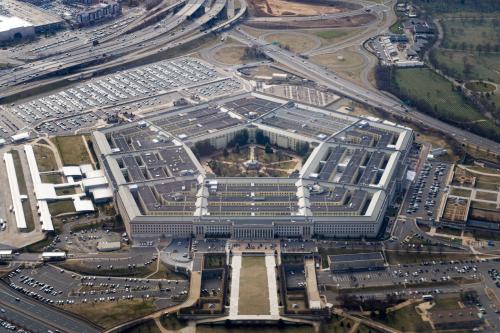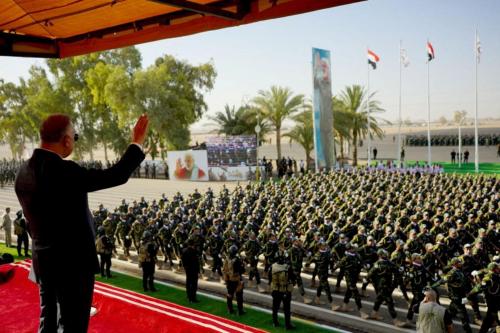As the war on terrorism moves beyond al-Qaida, it is clear that the American focus remains almost entirely on the Middle East. Every group mentioned by President Bush in his State of the Union address was from the Arab and Muslim world. And the two Middle Eastern members of the “axis of evil,” Iran and Iraq, were cited for being sponsors of terror, but not for being behind al-Qaida’s operations. Understandably, the horror committed by al-Qaida, and the threat that it still poses, have focused our attention on the Middle East. But it is a mistake to imagine that the global terrorism problem beyond al-Qaida is primarily Middle Eastern.
There is too much terrorism in the Middle East and we must seek to reduce it, but it must be put in global perspective. Consider our own government’s reports on global terrorism. In the five years preceding the tragedy of September 11th, the Middle East was not the leading region in the number of terrorist incidents or in the number of casualties from terrorism. Moreover, while the terrorist trend in the Middle East moved downward every single year, it moved upward in other regions, including Africa, Asia and Latin America. By the year 2000, the Middle East had the fewest incidents of terrorism of any region around the globe, except for North America. In terms of images of large-scale horror against innocent civilians in the 1990s, it is helpful to remember that some of the most tragic and ruthless bloodshed took place in the heart of Europe, in the former Yugoslavia. In Africa, the Rwanda genocide will haunt our memory for ever.
As for terrorism against American targets, as defined by the State Department, the Middle East consistently accounted for less than 7 percent of all global attacks aimed at American targets, reaching a low of less than 2 percent in the year 2000.
The world at large understands that our war with al-Qaida is just; this is a group that has inflicted such horror on America, displayed such skill and global reach, and declared a War on the United States, giving the United States a right to respond that no one can deny. Beyond al-Qaida, however, we must not give justification to anger in the Middle East that the US targets only that region even as we must work to reduce terror in that region.
The data cited above also points to another likely relationship: the decline of Middle East terror in the late 1990s was highly correlated with a hopeful Arab-Israeli peace process that many believed was likely to end in agreements between Israel and the Arab states. And since the collapse of these negotiations, there has been a dramatic upsurge in terrorist incidents within the region—al-Qaida aside.
That there is a relationship between hopelessness and violence broadly, and between Middle Eastern terrorism and the Arab-Israeli conflict more specifically, is accepted by almost everyone around the world. In a global survey, conducted last December by the Pew Research Center, majorities in every corner of earth believed that a resolution of that conflict would reduce terrorism.
And yet, our strategy for now seems to be entirely focused on the “supply side” of terrorism. One certainly must confront the merchants of death, who exploit hopelessness for their own ends, and who hijack causes in which they may not even believe. But this does not change the fact that there is a “demand side” to terrorism which enables terror groups to recruit more members, raise more funds, and appeal to public opinion. As the Israelis have found in the West Bank and Gaza, destroying one supplier of terror will not work if in the process one increases the despair and humiliation and thus the demand side, which could quickly be exploited by other aspiring suppliers.
The danger in appearing to focus our broader war on terrorism, beyond al-Qaida, primarily on the Middle East and only on the “supply side” is three-fold: First, it is unlikely to work unless we have a simultaneous strategy to address the demand side by alleviating hardship and projecting hope; second, in our appearance to be targeting primarily Arabs and Muslims despite the cited global trends, we reinforce their deep fears about us; and, third, we would transform what are complex and deep-rooted regional conflicts into ones involving the United States, and turn more of the anger toward us.
In the face of last September’s tragedy, President Bush moved prudently to prevent the crisis from turning into a clash of civilization with Arab and Muslim countries. Now comes the hard part: avoiding the slippery slope that can lead to such a clash despite the best intentions.
Shibley Telhami is the Anwar Sadat Professor for Peace and Development at the University of Maryland.
The Brookings Institution is committed to quality, independence, and impact.
We are supported by a diverse array of funders. In line with our values and policies, each Brookings publication represents the sole views of its author(s).



Commentary
Op-edPut Middle East Terror in Global Perspective
February 17, 2002